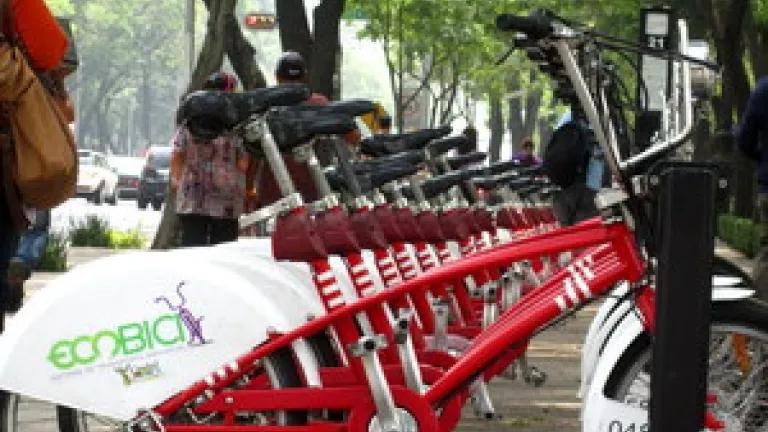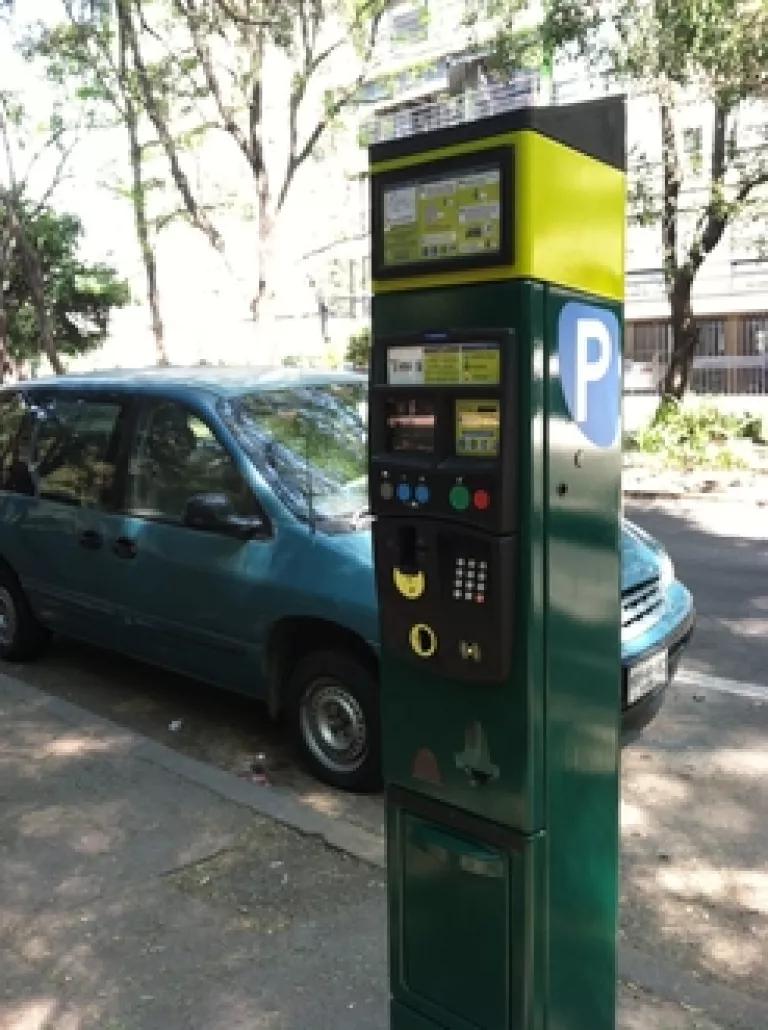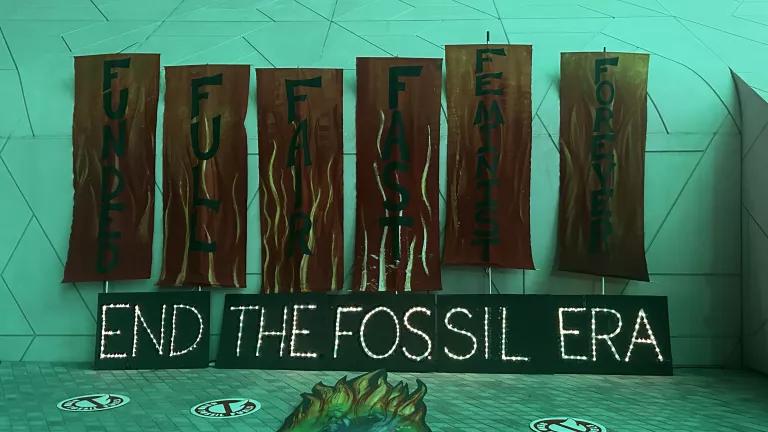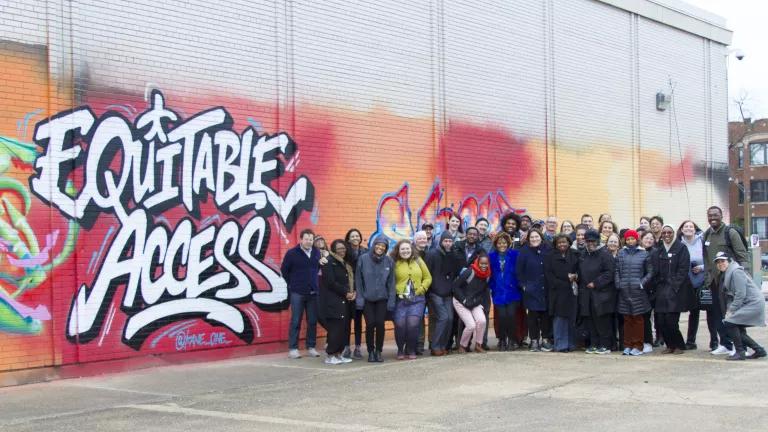Mexico City is making progress on cleaning up dirty transportation - now the whole country needs to follow suit

Ecobici station in the neighborhood of Condesa
Mexico City’s reputation for traffic congestion and air pollution is, unfortunately, less than positive: sounds of angry car horns, images of gridlock and the smell of exhaust all come to mind. Yet when I visited the city last week, efforts to clean up the city’s transportation sector were evident everywhere I looked, from buses and bicycles to parking meters and pedestrians. As I talked to Mexican colleagues, I learned that other cities are also making similar progress. Now it’s time for the federal government to follow their lead by adopting regulations to make all of Mexico’s fuels and vehicles cleaner and more efficient.
I shouldn’t have been surprised by the urban mobility improvements in Mexico City, as in January the city won the Sustainable Transport Award from the Institute for Transportation and Development Policy (ITDP) and the World Resources Institute Center for Sustainable Transport (CTS EMBARQ). The city’s new bus rapid transit (BRT) system called Metrobús complements the underground Metro to carry thousands of people around the city every day. The public bike sharing program “Ecobici” has been a major success so far, and it plans to expand significantly over the coming year. New parking meters in the Polanco neighborhood are reducing local traffic back-ups, increasing the flow of customers to nearby businesses and raising capital for the neighborhood to reinvest in its streets and sidewalks. And crosswalks are becoming the official domain of pedestrians (see photos below).

New parking meters in Polanco are raising money for the neighborhood to reinvest in its streets and sidewalks

Pedestrians rule
I was in Mexico City to meet with other international and Mexican organizations, new members of the environmental ministry, and private industry representatives, who had come together to help identify key strategies for addressing the country’s transportation-related problems. The variety of people in the room was matched by the diversity of topics we discussed, which ranged from health impacts of black carbon emitted by burning dirty diesel fuels to socio-economic equitability in public transportation. During the two-day meeting, it became evident that the government needs to take action in the short term to help its citizens avoid health and climate impacts in the long term, and its engagement in the meeting was an encouraging sign that this will be a priority area for environment ministry.
While advances in Mexico’s public transportation sector are critical, it is clear that not everyone will be willing or able to give up their cars. Consequently, vehicles need to become more efficient at using fuels and less polluting by using low-sulfur fuels and better pollution filters. Doing both together will bring the best vehicle technologies to Mexico, creating a modern and world class fleet.
To create more efficient vehicles:
- The government should adopt pass the newly-revised standard regulating fuel efficiency in new light duty vehicles through 2016, called NOM-163. This would harmonize the Mexican fleet with that of the U.S., benefitting auto manufacturers by ensuring they only have to produce one version of each model, instead of separate ones for the two countries’ different markets. Plus, it would save fuel costs for consumers, cut greenhouse gases, and create new jobs. Then, the government can quickly begin working on phase two of these standards to extend to 2025.
- New fuel efficiency standards for trucks and buses should also be harmonized with the U.S. Just as with cars, harmonizing these standards would save money for consumers and businesses, cut greenhouse gases, and create new jobs, while also helping harmonize manufacturers’ production.
To make Mexico’s vehicles less polluting:
- Mexico needs to clean up its dirty fuels, specifically by reducing the sulfur content of diesel fuels to 10 parts per million (ppm) nationwide. Taking this step to so-called “ultra-low sulfur diesel” fuel (“ULSD”) will reduce particulate soot emissions that trigger asthma emergencies; will cut black carbon emissions, which a new study shows are the second most powerful contributor to climate change; and enable the use of highly effective particulate filters on new diesel trucks, buses, and engines. These ultra-low sulfur diesel fuels need to be available throughout the country, not just in a few major cities.
- Along with ULSD fuel, Mexico should adopt new vehicle emission standards for particulate and smog-forming pollution that are harmonized with the U.S. Up until now, Mexico’s high-sulfur fuels precluded the use of the highly-effective catalysts and pollution filters that are standards on all new vehicles in the U.S. But with ULSD in place, Mexico could see emissions from new vehicles drop by more than 90 percent.
Adopting these regulations would be a win-win for everyone. They would help make Mexico’s vehicles cleaner and more efficient, on par the best cars and trucks in the world. They would help Mexico meet its air quality and climate goals. They help prevent unnecessary public health impacts, including the 14,700 deaths that the World Health Organization attributed to air pollution in Mexico in 2010. And they would be the perfect complement to the successful public transportation initiatives already under way in Mexico City and other metropolitan areas.




